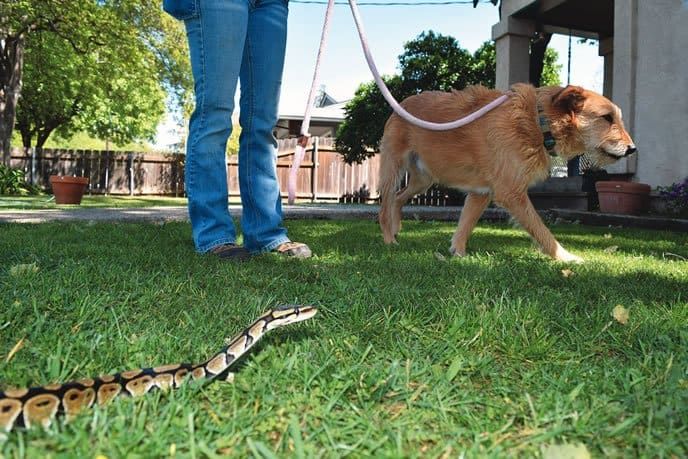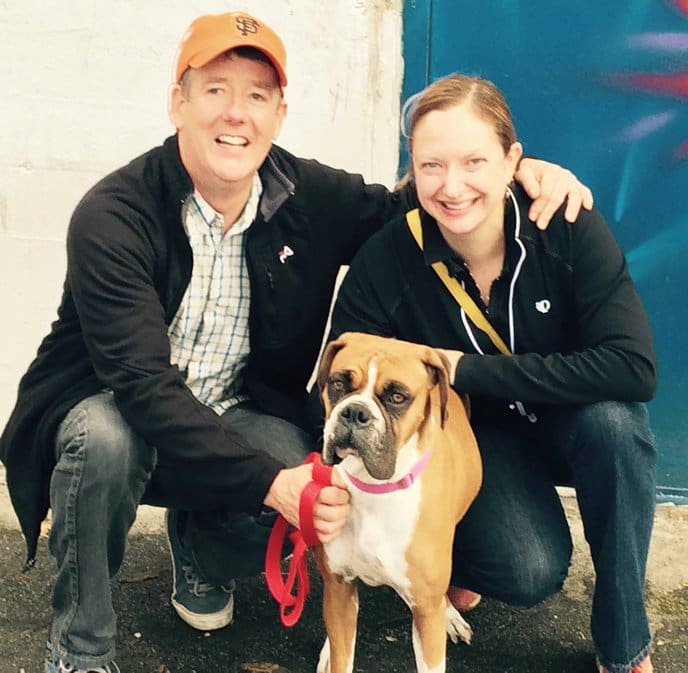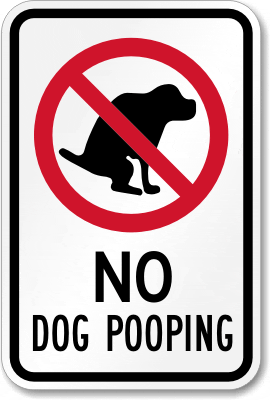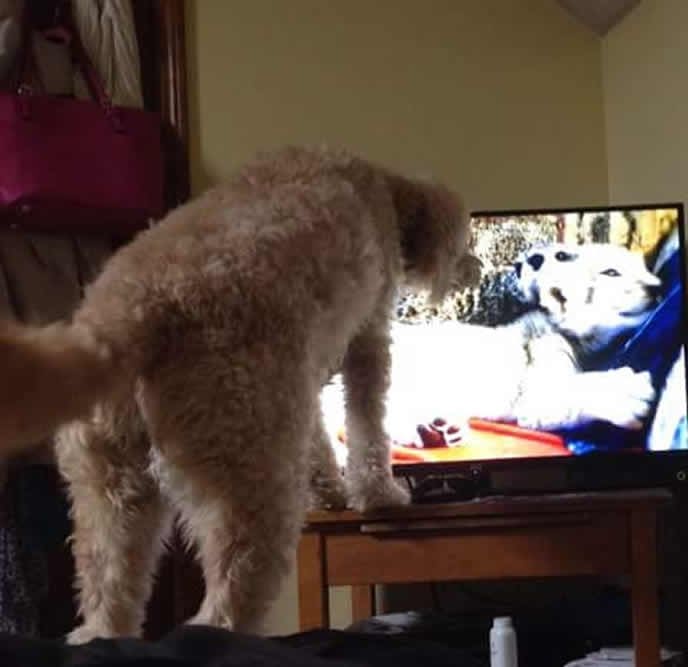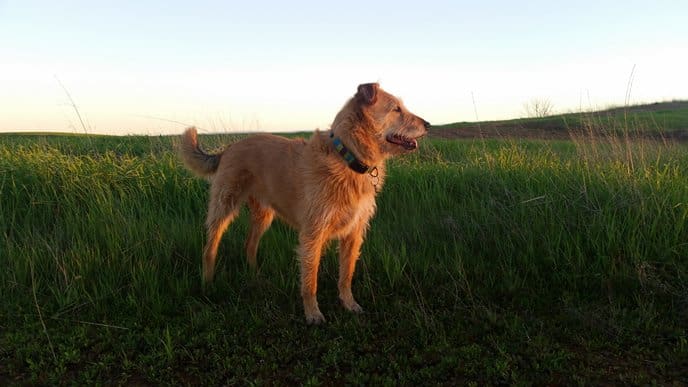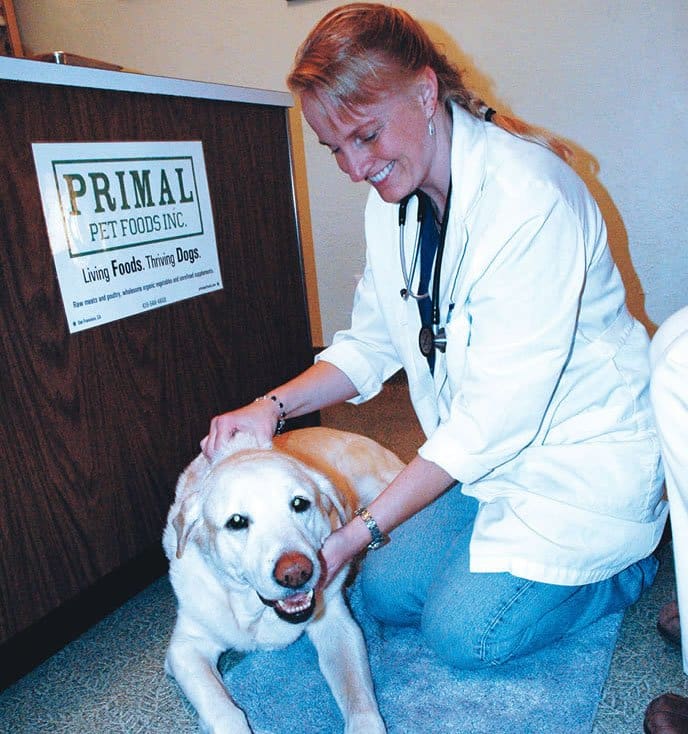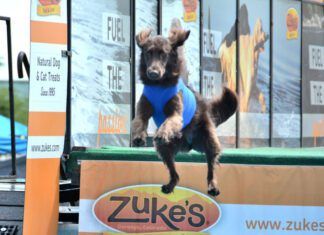Positive training methods focus on rewarding activities, and they’re fun for dogs and handlers. But mention rattlesnakes and many dog owners worry that positive reinforcement isn’t enough. In order to remain safe around rattlesnakes, some say, your dog may need aversion training with an electronic (shock) collar.
In conventional aversion training, dogs receive uncomfortable or painful electric shocks when exposed to whatever their owners want them to avoid. In theory, the dog will associate the sight, smell, or sound of a rattlesnake or other danger with the pain of a shock and immediately run away.
“But that doesn’t always happen,” says Jamie Robinson, founder of Seize the Leash in Tucson, Arizona. “One never knows what the dog is actually associating with the shock when it happens. I know of several dogs here in Tucson who now attack rattlesnakes after ‘snake breaking,’ since snakes were associated in their minds with the pain received during training. That association caused these dogs to attack rather than run in order to avoid the associated pain. Another dog is reportedly terrified of oscillating sprinklers because they sound like a snake’s rattle.”
While the best aversion trainers introduce shock collars gradually and with concern for the dog’s age, size, history, and personality, no one can guarantee that any aversion-trained dog will never be harmed by whatever it was trained to avoid. Accidents happen. In addition, canine responses to snakes vary. Some dogs are naturally cautious and reluctant to explore new situations; others are eager to inspect, smell, and taste the unfamiliar; and some breeds are more likely than others to chase or attack a snake, poisonous toad, or moving object.
Avoid Snakes Using Positive Training!
Is it possible to teach a dog to avoid snakes without using a shock collar? Like Robinson, a growing number of trainers say YES! Their goal is not to produce a dramatic reaction in which the dog recognizes a rattlesnake and runs or jumps in the opposite direction; their goal is for the dog to recognize the snake (or whatever it has learned to avoid) and stay away.
Robinson’s approach, which she calls Structured Game Training, combines play with purpose, cooperation, and goals. “If you really want a dog to stay away from something,” she says, “you have to make it the dog’s choice, not just a conditioned response.”
Her book Snake Avoidance Without Shock provides detailed instructions for playing games lasting five minutes or less, no more than one game per day, for six weeks. Its themes include self-control, motivation, “leave it,” maintaining close proximity to the handler, “stay” (in a variety of positions), developing a reliable recall, distraction training, perfecting an emergency distance sit/stay, drop on recall, odor identification, targeting, “back up, it’s dangerous,” proofing, and more. Some are familiar obedience behaviors and others completely different, but all work systematically to improve dog/handler communication and canine safety.
Does your dog chase after squirrels, rabbits, cats, toxic toads, lizards, porcupines, skunks, cars, or bicycles? Do you live around dangerous plants, like spiny cactus or poisonous mushrooms? Does your dog vacuum the floor, picking up cookie crumbs, ant traps, prescription drugs, or chocolate? Maybe your pup swallows chew toys and underwear. Our dogs risk life and limb every day, even without the threat of poisonous reptiles, and Robinson’s exercises can help any dog avoid all of those problems.
When it’s time to introduce rattlesnakes, she offers step-by-step instructions using fake snakes and the real thing, provided by a local herpetologist.
“The most important part of teaching snake avoidance does not involve humans,” she says. “The dog must learn what to do when confronted with the sight, sound, and/or smell of a snake even when the human is missing. An estimated 85 percent of all snake bites to pets happen in their own backyard. The key to success in this type of training is that it’s inherently easy and fun for both of you. If it isn’t, it will be a source of stress.”
Robinson’s Seize the Leash training center in Tucson offers eight-week Snake Avoidance Without Shock workshops. She will soon offer classes in Clearwater, Florida, where she moved in March.
In California, trainer Pamela Johnson became interested in rattlesnakes when she and her husband moved to a rural area. “In my opinion, teaching dogs to avoid rattlesnakes is the same as teaching them to do tricks or any other behaviors,” she says. “I build a relationship and use management and common sense to keep dogs safe from all dangerous things, not just rattlesnakes.”
Force-free aversion training can be practiced anywhere and at any time. “There isn’t any fall-out or stress when using positive training methods,” she says, “but it is not a quick fix. It requires commitment. For best results, you have to take the time to work with your dog.”
Johnson teaches specific behaviors and skills using games and play. The relationship-building lessons include handler focus and attention, “settle on the go,” body blocking (trained as a behavior and not by using force or intimidation), a variety of emergency collar-grab games, luring, targeting, leash-walking, impulse control, fun recall games, and stay games.
“I teach owners how to train their dogs to do a variety of tricks, agility skills, and canine-freestyle behaviors that are designed to move dogs away from rattlesnakes,” she explains. “My goal is to show others how to have fun with their dogs and at the same time teach their dogs life-saving skills. The main part of my program teaches dogs to recognize snakes, avoid them, and go to their owners. I introduce sight, sound, and scent by using remote-controlled snakes, fake snakes, snake sounds, and dead snakes (snake skin and snake feces).”
Johnson’s Positive Rattlesnake Avoidance webinar is available from the Pet Professional Guild. This July, her Positive Rattlesnake Avoidance Training and Safety Program DVD will be published by Tawzer Dog. “It is a complete guide to training the behaviors and games,” she says, “and gives insight into rattlesnake behavior, teaches simple ways to tell the difference between venomous and non-venomous snakes, answers questions about rattlesnakes, provides helpful tips on safety, and walks you through a variety of ways to make your backyard safe and rattlesnake-free.”
CJ Puotinen, author of The Encyclopedia of Natural Pet Care and other books, is a long-time contributor to WDJ. She lives in Montana.
Related Articles
How to Prevent or Treat Bites from Poisonous Snakes
Are You Sure It Was A Rattlesnake?
Appreciating Rattlesnakes
Why Are The Effects Of Snake Venom So Varied?
A Snake-Bite Survival Story


